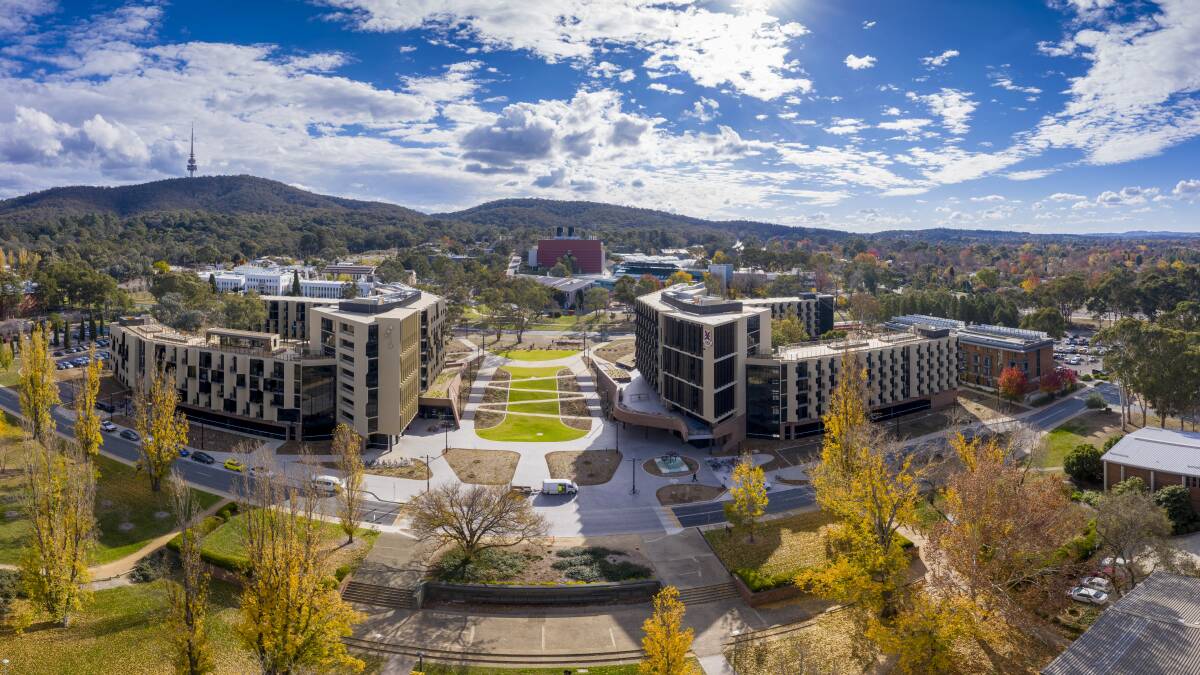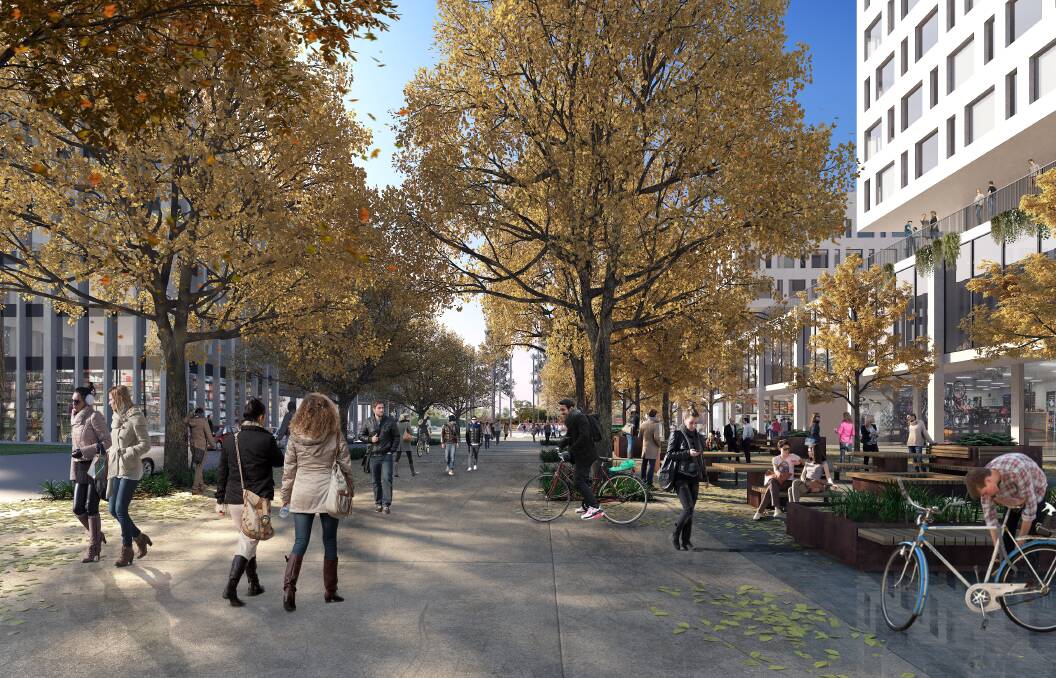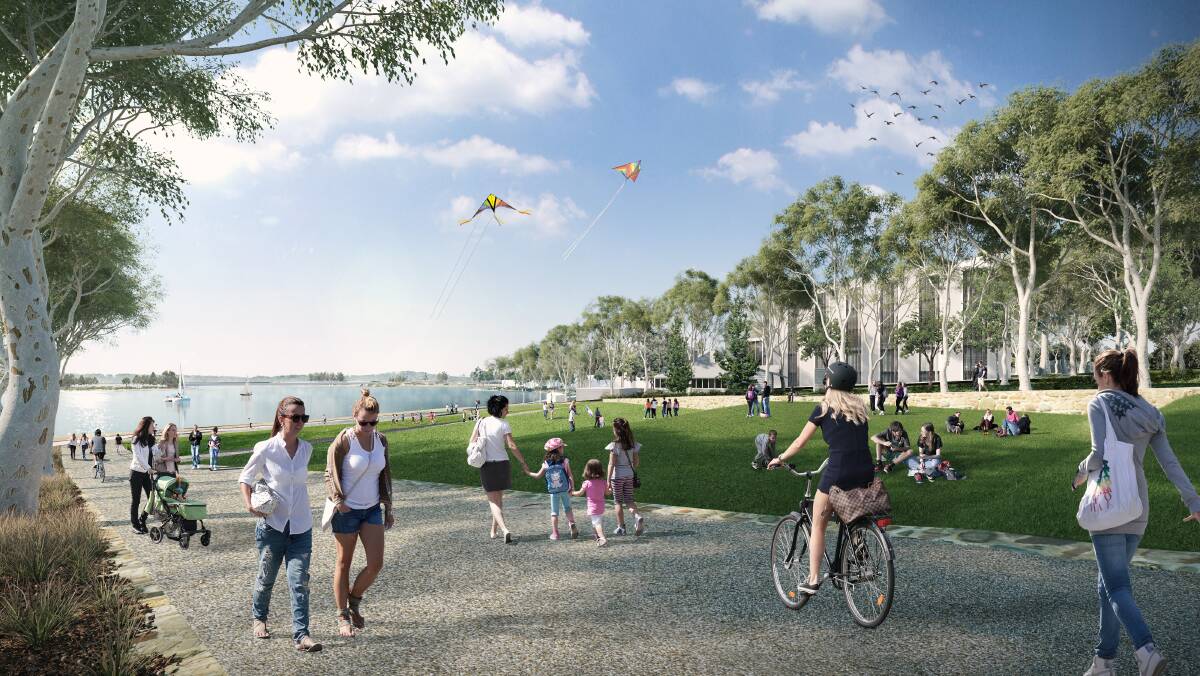The ANU's multi-million dollar precinct Kambri is just the start of the university's ambitious plans to transform its campus - and with it the city.
Subscribe now for unlimited access.
or signup to continue reading
On Thursday, as the ANU celebrated 73 years since its founding, chancellor Gareth Evans unveiled a new master plan to renew and expand the university over the next two to three decades.

The plan is not yet costed, but will be rolled out in three main stages in line with future investment.
A new national research school will be established near the shores of Lake Burley Griffin as four more precincts take shape across Acton, connected by tree-lined promenades with Kambri at their heart.
Eventually, roads will disappear or be rerouted from the centre of the campus entirely to make way for a car-free green zone for pedestrians and cyclists.
A new "North Link" avenue will ferry cars along the university's perimeter instead. A pilot of a new campus shuttle bus will also kick off later this year to connect students with the ACT's public transport network, after the government controversially pulled buses off campus.
While university planners are hoping to usher light rail on site instead, ANU threw out University Avenue as a future connection for the network due to its proximity to nearby underground parking and research labs likely to be "disturbed" by tram vibrations.
But the university said the proposed North Link had already been tested for basic engineering feasibility and could support light rail down the line, as the ANU looks to strengthen its connection to the city centre and nearby institutions, including the CSIRO.
The ACT government will sell off five more parcels of land to the university, which already spans about a third of the city centre, over the next year as part of an ongoing agreement.

Professor Evans said the plan was modelled on the best universities in the world and had already received strong support from stakeholders, including on campus and in the wider community.
The chancellor spent the past 18 months consulting on the design and poring over existing ACT and Commonwealth plans for the city to radically reshape the campus for the first time.
"The master plan will impose a sense of structure across the whole campus - visible bones and joints - which we have never had before," Professor Evans said.
While the ANU was always a "key anchor" in Walter Burley Griffin's original vision for the city, an external review in 2018 found it lacked its own clear plan and identity.
The new master plan will place the university's heritage values firmly at the centre of its design - from historical buildings and sites of Aboriginal significance to the eucalyptus forest befitting a bush capital institution.

ACT chief minister - and ANU alumnus - said he looked forward to taking a closer look at the master plan on Thursday, reflecting on the territory's own commitment to better connect the city with its university.
"Ths relationship is fundamental to the development of Canberra's CBD," he said. "Not only to its economic future but I think most importantly to it's cultural and social future."
While the university attracted private investment in its student accommodation to finance the Kambri precinct, it did not say if any other deals had yet been struck to get this more ambitious series of projects off the ground. They were not expected or intended to hike up student fees, the spokesman said.
But new developments as well as "upgrades to computing infrastructure" will likely also expand the ANU's carbon footprint.
Under the master plan, the university will switch over to 100 per cent renewable energy, but the ANU has not yet revealed a time-frame for the target. Energy audits and solar panel installation are included in the first phase of the plans set to kick off from 2019 to 2023.
With parking a common gripe on campus, the university said reducing congestion was another key focus. Over time, parking will be shifted away from the new closed green heart and ramped up along its perimeter.
Thirteen potential sites had been identified for multi-storey parking, with construction on the first facility expected to begin early next year and open in September 2020.
Service vehicles and those transporting people with disability will still have access to the university's centre via a network of shared-use slow-speed streets.
Former former minister Julie Bishop will become the university's first female chancellor next year when Professor Evans retires in December.
READ MORE:


